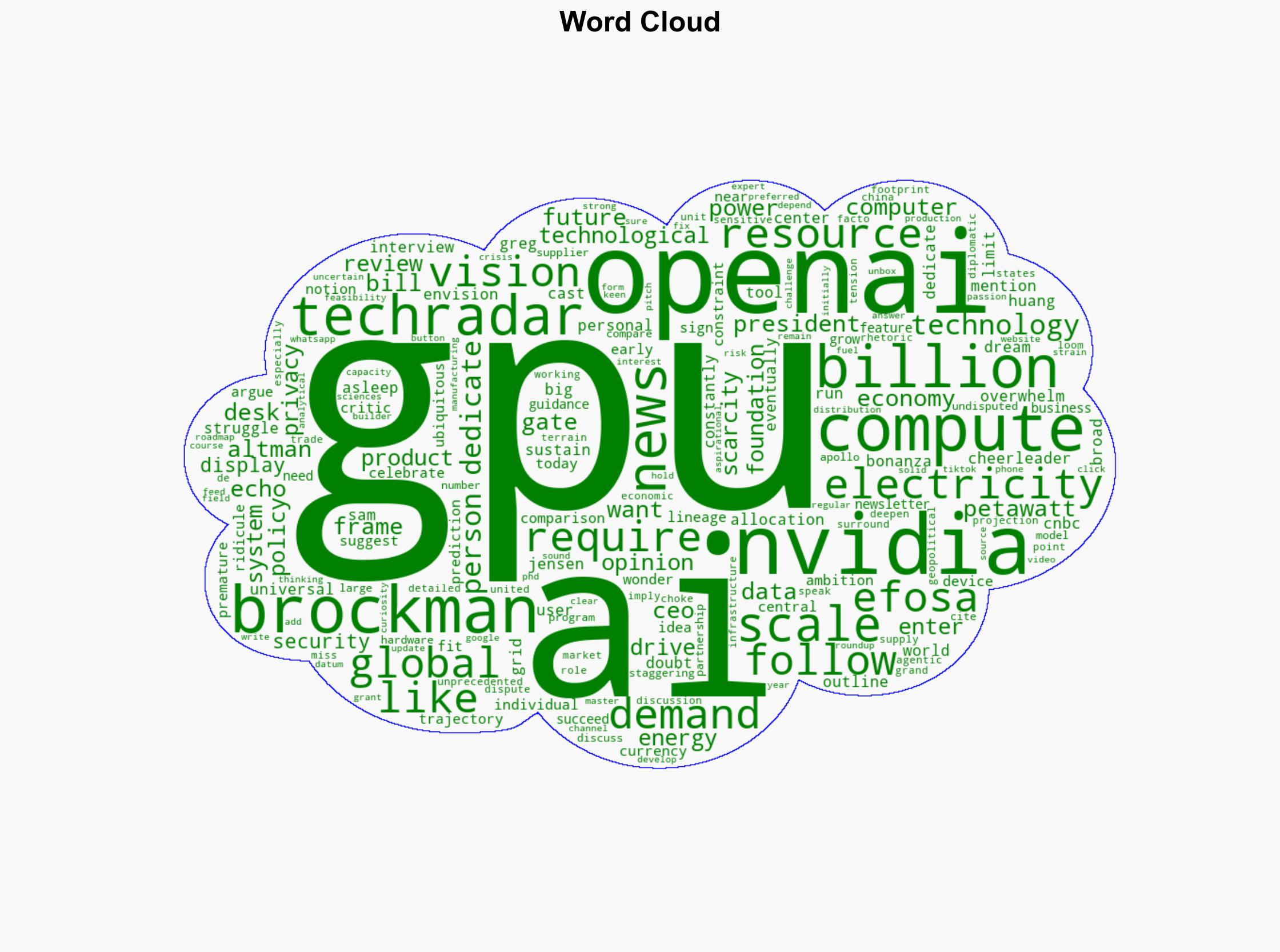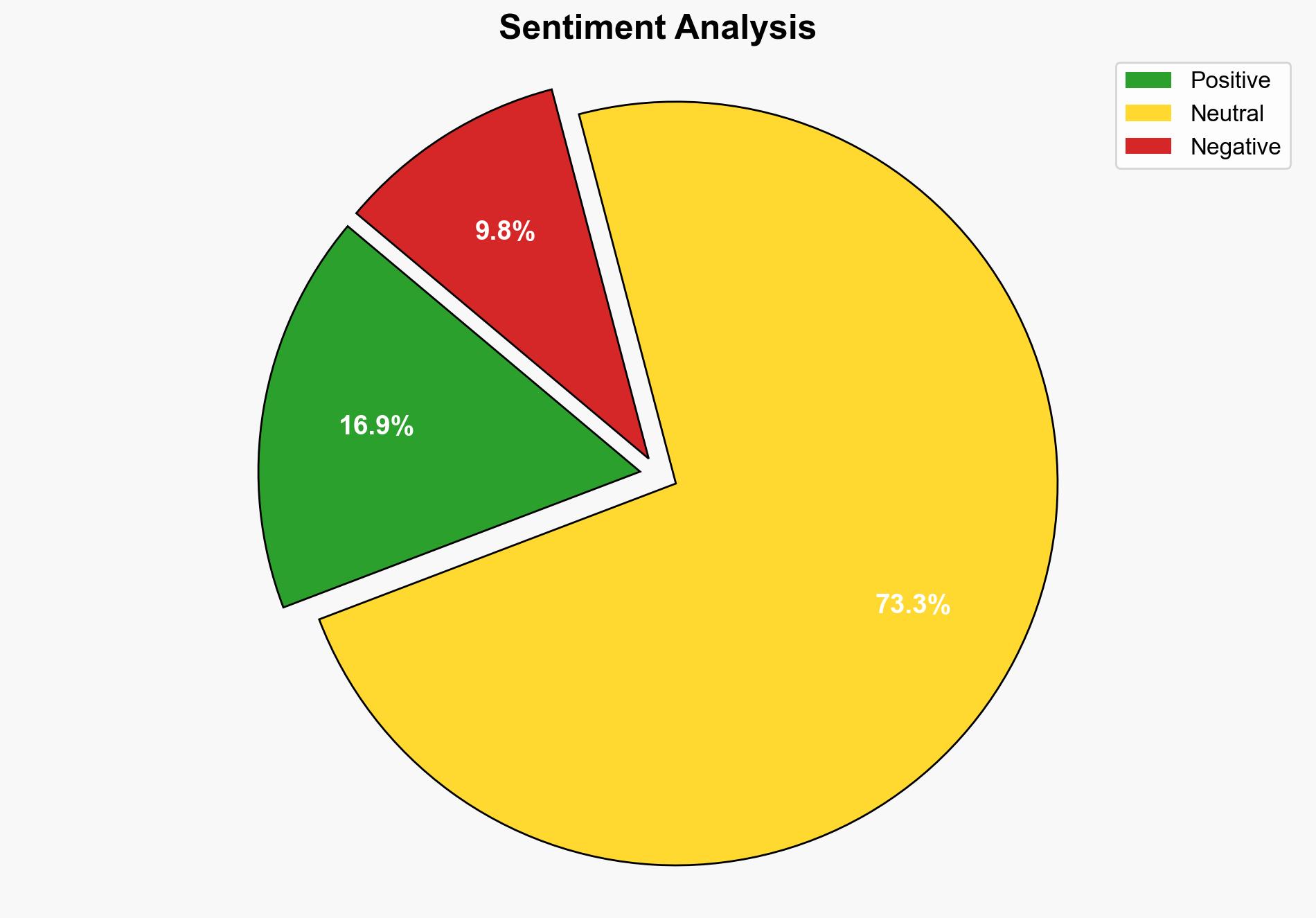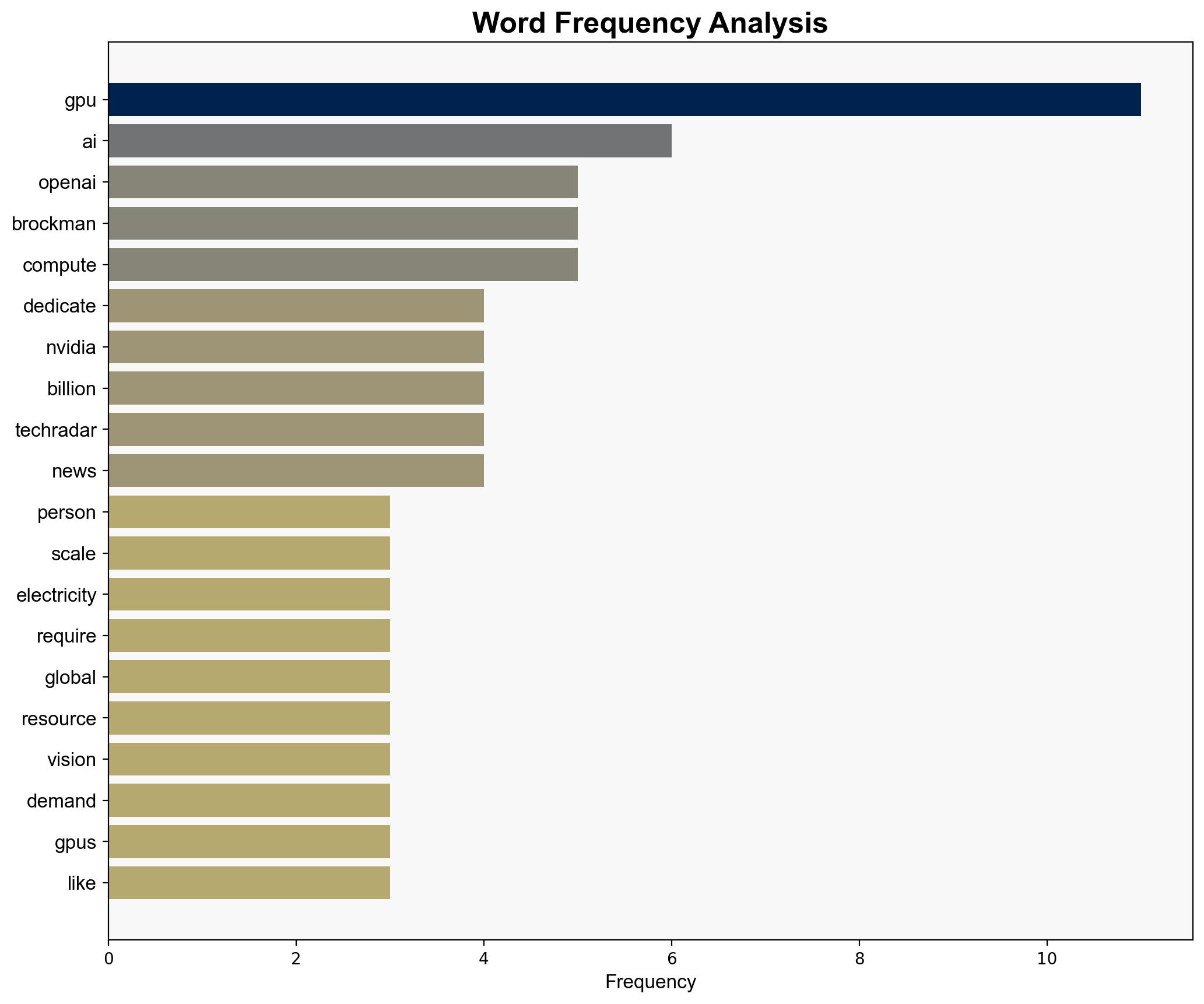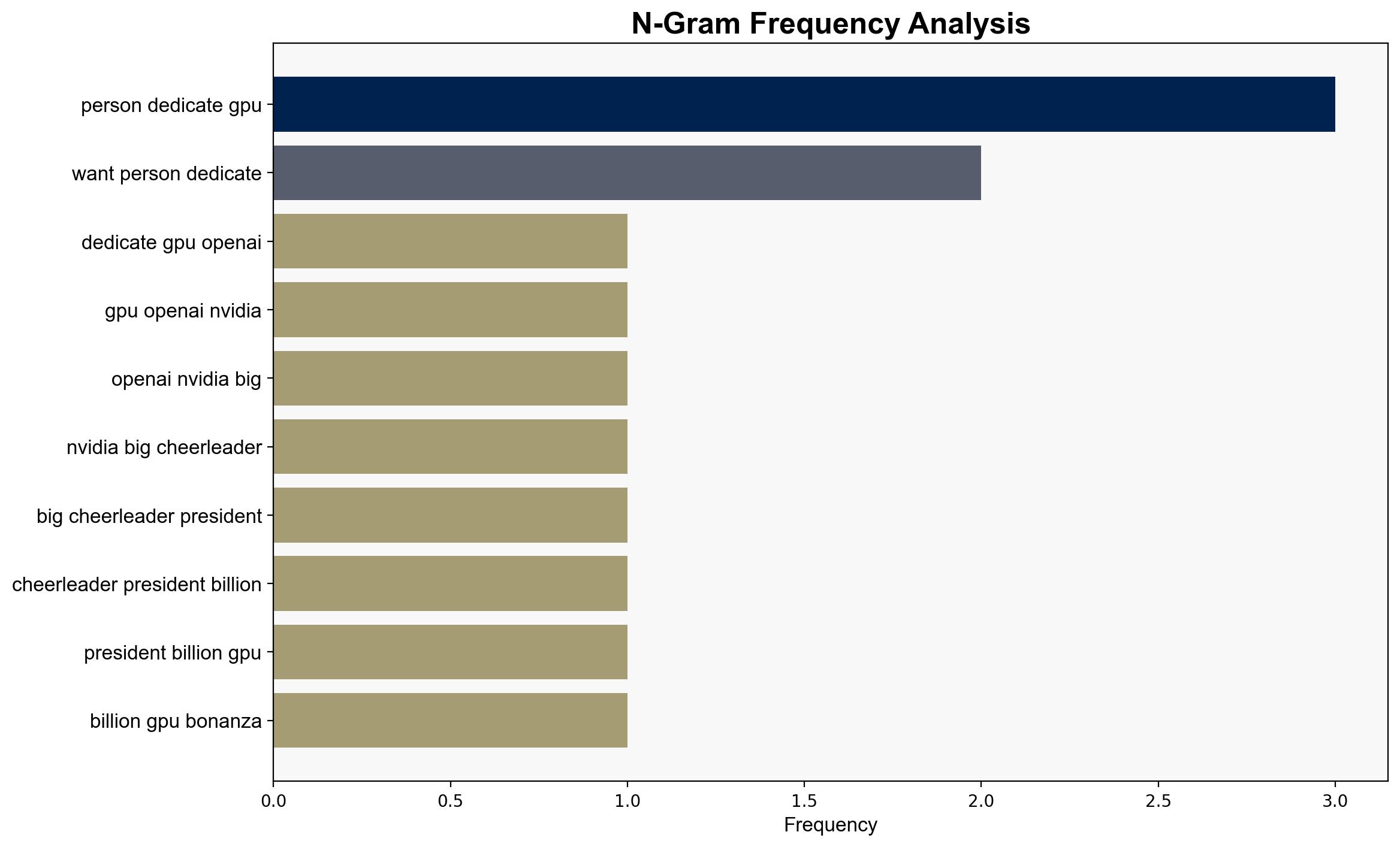You really want every person to have their own dedicated GPU OpenAI becomes Nvidia’s biggest cheerleader as its president calls for a 10-billion GPU bonanza – but no mention of the petawatt-scale electricity it would require – TechRadar
Published on: 2025-10-07
Intelligence Report: You really want every person to have their own dedicated GPU OpenAI becomes Nvidia’s biggest cheerleader as its president calls for a 10-billion GPU bonanza – but no mention of the petawatt-scale electricity it would require – TechRadar
1. BLUF (Bottom Line Up Front)
The strategic judgment indicates a moderate confidence level that the push for universal GPU allocation by OpenAI and Nvidia is primarily a visionary aspiration rather than an immediate actionable plan. The most supported hypothesis suggests that this initiative is a strategic positioning to influence market perception and drive technological investment, despite significant logistical and energy challenges. Recommended action includes monitoring technological advancements and energy solutions that could support such a vision, while preparing for potential geopolitical and economic impacts.
2. Competing Hypotheses
Hypothesis 1: OpenAI and Nvidia’s call for a 10-billion GPU allocation is a strategic vision aimed at positioning themselves as leaders in AI and computing technology, driving investment and innovation in the sector.
Hypothesis 2: The initiative is a realistic plan to decentralize computing power, anticipating technological advancements that will mitigate current energy and logistical constraints.
Using ACH 2.0, Hypothesis 1 is better supported due to the lack of detailed plans addressing the energy and infrastructure challenges, suggesting a focus on market influence rather than immediate implementation.
3. Key Assumptions and Red Flags
– Assumption: Technological advancements will eventually resolve current energy and logistical constraints.
– Red Flag: Absence of detailed plans or discussions on the energy footprint and infrastructure demands.
– Potential Bias: Optimism bias in projecting technological capabilities and market readiness.
– Missing Data: Specific strategies to overcome geopolitical and resource allocation challenges.
4. Implications and Strategic Risks
The push for universal GPU allocation could exacerbate existing geopolitical tensions, particularly between the United States and China, over technology access and resource control. Economically, it may lead to increased investment in AI and computing infrastructure but also strain global energy resources. Cybersecurity risks could escalate as more powerful computing resources become widely available, potentially enabling more sophisticated cyber threats.
5. Recommendations and Outlook
- Monitor technological developments in energy-efficient computing and renewable energy sources.
- Engage in international dialogues to manage geopolitical tensions related to technology access.
- Scenario Projections:
- Best Case: Technological breakthroughs enable sustainable implementation, boosting economic growth and innovation.
- Worst Case: Energy and geopolitical crises emerge, leading to global instability and economic downturn.
- Most Likely: Gradual progress with significant challenges, requiring adaptive strategies and international cooperation.
6. Key Individuals and Entities
– Greg Brockman
– Jensen Huang
– Sam Altman
7. Thematic Tags
national security threats, cybersecurity, technological innovation, geopolitical tensions, energy sustainability





